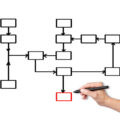
Todd Smith is a serial entrepreneur who is now building the leading sales text messaging platform for automotive dealerships. Todd is an industry author, speaker, and industry expert with over 30 years of automotive retailing experience. View all posts
If you have been following this journey on how 100 dealerships handle the lead process, you will most likely already see opportunities and things you can change within your dealership and your own follow up process. If you haven’t read the previous posts, here are the links.
Now let’s get on with today’s post and focus our attention on engaging the unresponsive shopper. You may call them ghosts or non-buyers or distractions, but there is gold out there if you know how to mine it effectively. These are those shoppers who submitted a lead, but you never made the first contact with them. That could include a phone call, text reply, or email reply.
After analyzing 100 dealerships follow up sequences, we notice a few items that could lead to more engagement with shoppers and, ultimately, more sales appointments.
- After two days, 94% of salespeople stopped personally following up on leads.
- Dealership Managers are only sending emails 13% of the time to uncontacted sales leads.
- Every follow-up email messaged stayed wholly focused on the original lead vehicle type.
Side Note:
We noticed most of the messaging we received up to this point was weakly constructed and lacked any substantial CTA. We believe most dealerships have prescribed to a set it and forget it approach in regards to the follow up messaging within their CRM system. If you are not optimizing your CRM messaging every single month to improve clickthrough rates and conversion, you are leaving deals on the table.
Let break down the three points for today as we continue to dive deeper into the dealership’s sales process.
We concluded the short length of direct follow-up by salespeople is a culmination of having to process bad leads without a system of identifying valid in-market shoppers from tire kickers, dealership lead volume, and the reliance on the CRM handling the follow-up. Unfortunately, these three issues are producing subpar results.
Another Side Note:
Hunting versus Farming automotive leads. The stark difference was made obvious with the voracious outreach “The Hunt,” followed by almost silence or just a trickle of emails after the hunt didn’t produce the immediate engagement the salesperson wanted. This tipping point suggests dealerships would be better taking a farming approach to leads building momentum with the shopper instead of the hot and cold approach 94% of dealership executed in our test.
How do you fix it?
First, we suggest a simple increase from two active follow up days to three. On the third day of follow up your voice call, email, and text should completely change direction from the narrow focus of the original lead to a broad messaging format—highlight three alternative vehicles to the shopper. The reason is that if the shopper hasn’t responded to your initial messaging, they have either disqualified themselves on that specific vehicle, timing has changed, or they have already committed to buying from someone else. We saw over and over salespeople staying on a specific vehicle within the communication instead of asking questions or opening up alternative vehicle options. Questions and alternative vehicles are the keys to the day three communication if shopper contact has not been made yet.
Second, we strongly believe in management involvement early and often. This can prove difficult in high volume stores but can easily be accomplished in smaller stores with the right process in place. Not only the messaging, but even the tone of the manager’s engagement should be different from the salespersons. This is a great moment for the manager to ask a broader series of questions around the “Why.”
- Why are you interested in the 2019 Ford F-150?
- Why are you deciding to shop now?
- Why is this the right vehicle for you now?
We found in all of the emails we received from the dealership management focused on the negativity in general of the automotive purchase experience and why our dealership process was better with maybe a thank you for shopping thrown in there for good measure. We believe this was a missed opportunity for engagement. Instead, 100% of the time, we received a broadcast message from the dealership.
The third was the singular direction in communication, focusing on only the exact car from the initial lead. This narrow focus hurts the ability for value creation by a salesperson. If, during the initial contact, salespeople jump right into the vehicle features and pricing, the salesperson is not in control leading to reduced grosses and moving the conversation to one that is only transactional in nature. We believe salespeople should avoid this outcome by taking a consultive sales approach through questions instead of just supplying shoppers with only the requested information.
In our analysis, there was so much room for improvement in the dealership lead process for every dealership shopped in our study. Dealerships can instantly improve by just rewriting there follow up correspondence and holding their team accountable for three days of salesperson follow up engagement instead of two.
In our next and final post, we will cover creating a better communication cadence and potential titles of each email. We hope this is helping you rethink your own sales processes at your dealership.
🙏 Please give some love by clicking and sharing this article with your friends by using the social links on the left. This helps others find my articles and encourages me to write. 😁






Join 55,000 of your automotive peers. Subscribe to the automotive technology newsletter.
Every Sunday evening we’ll send you a roundup of the best content and events from 360Converge and around the automotive industry. Make sure you’re ready for the week! Subscribe now.
Subscribe here